
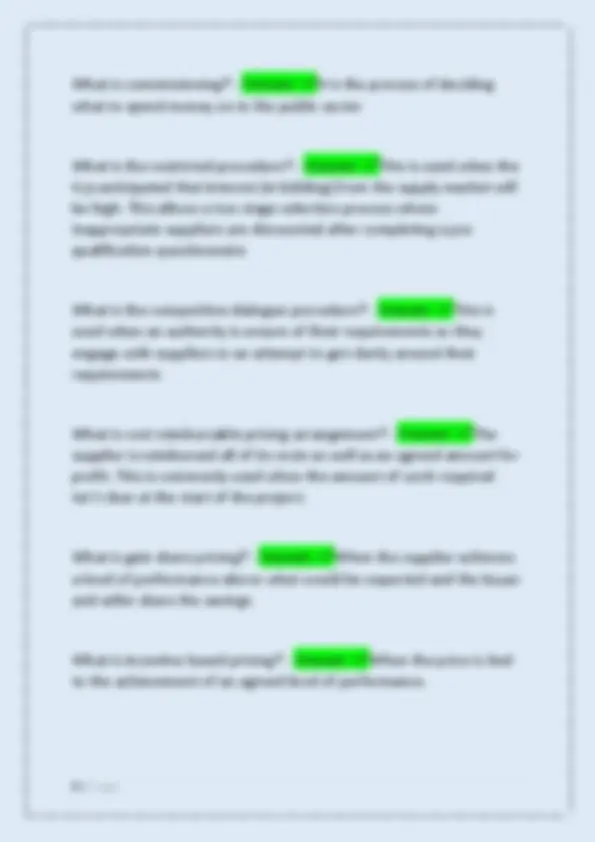
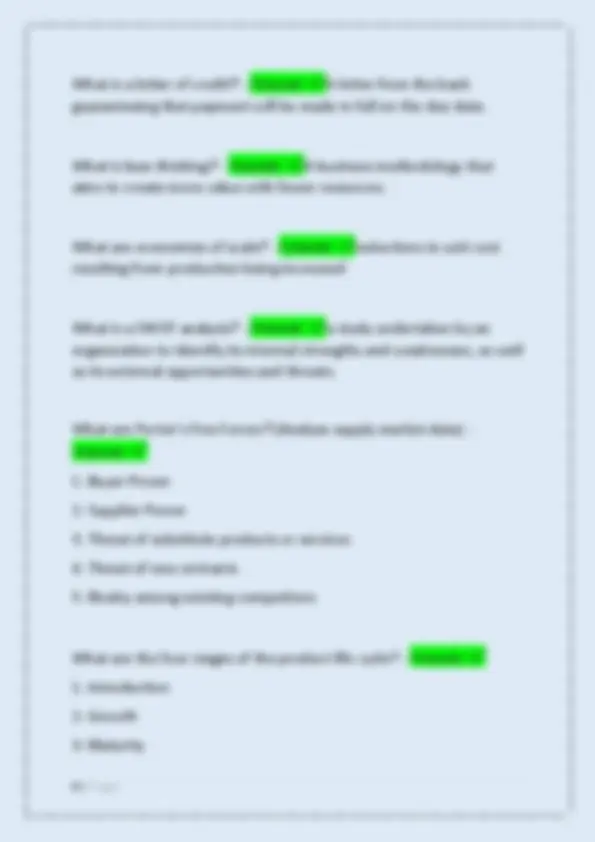
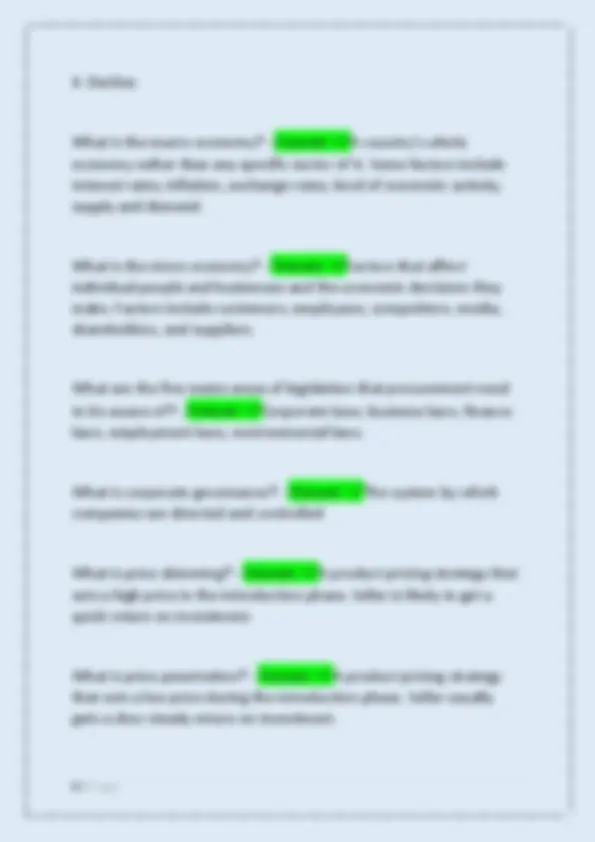
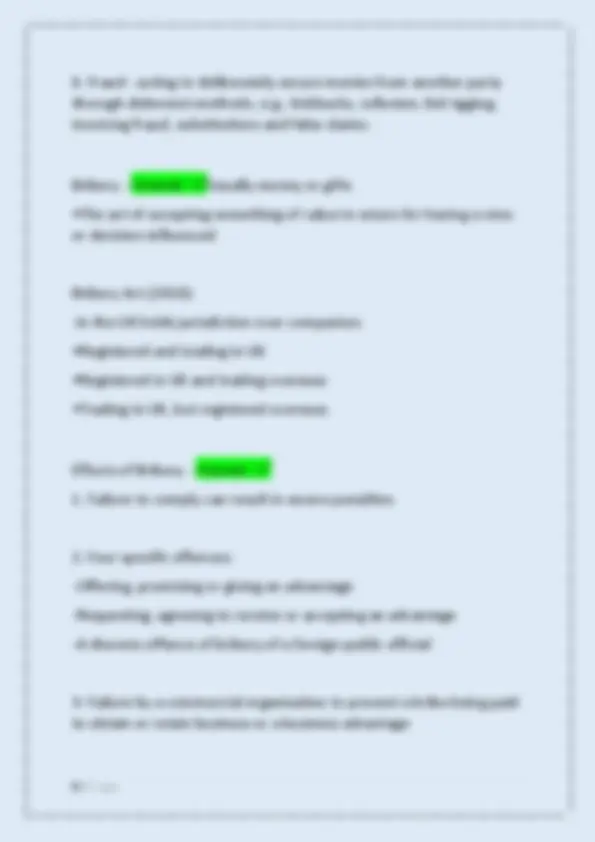
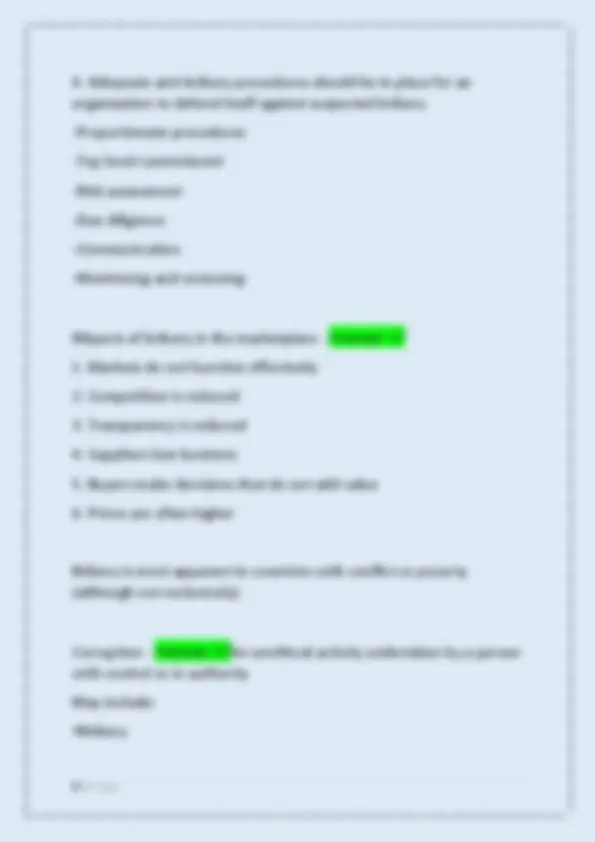
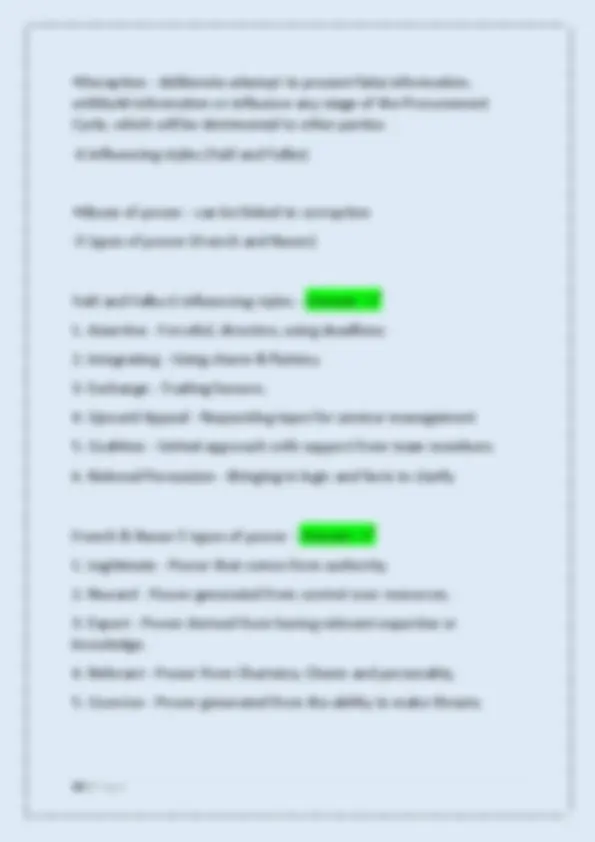
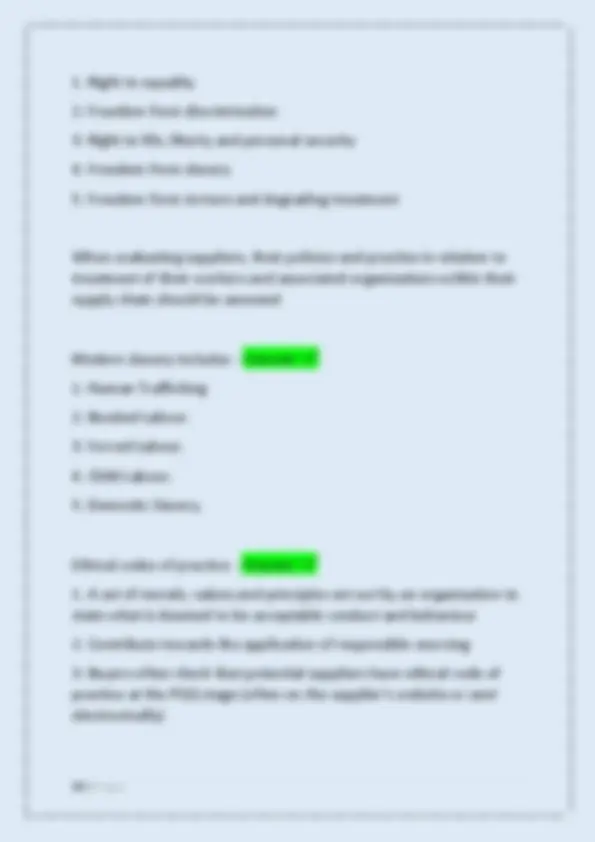
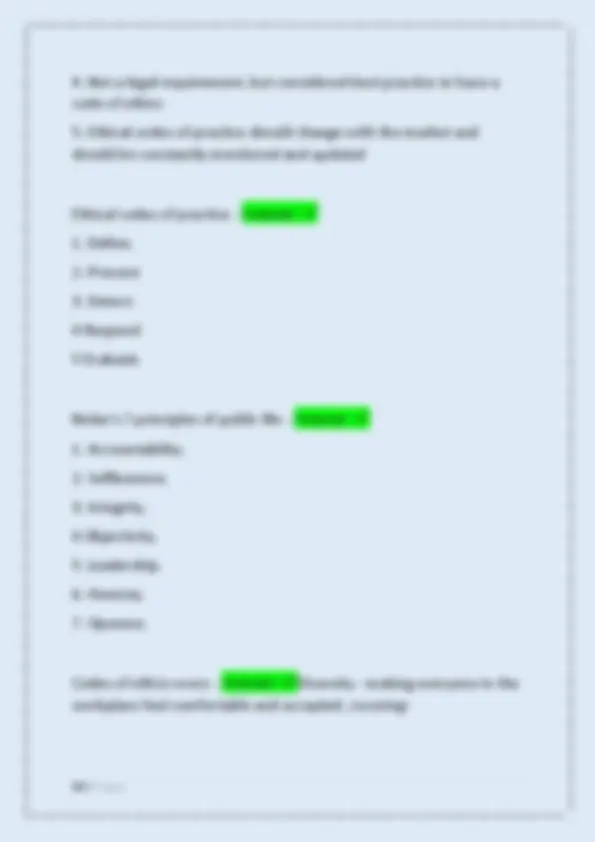
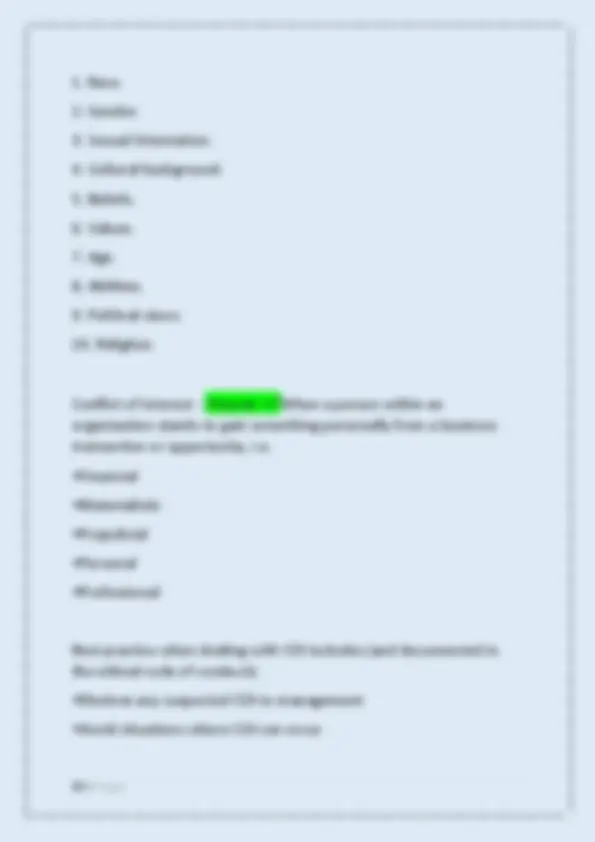
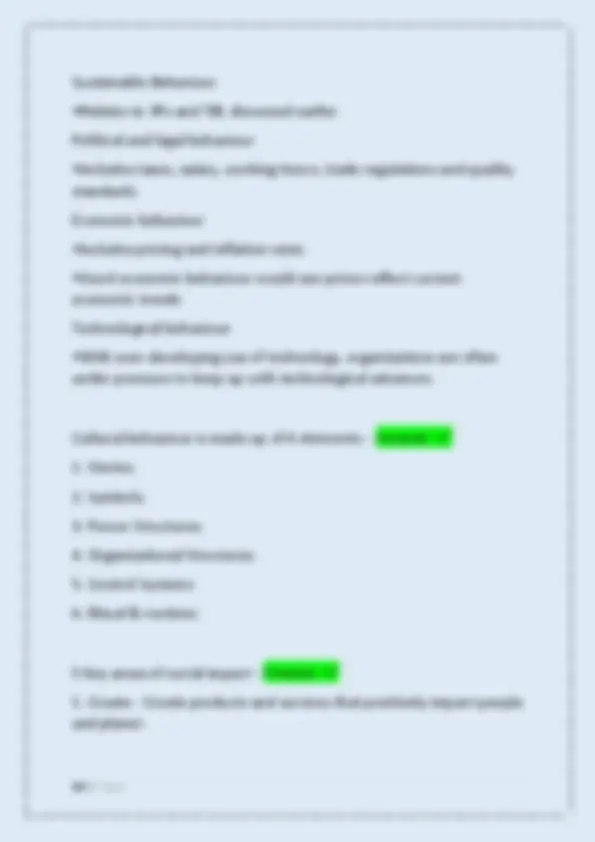
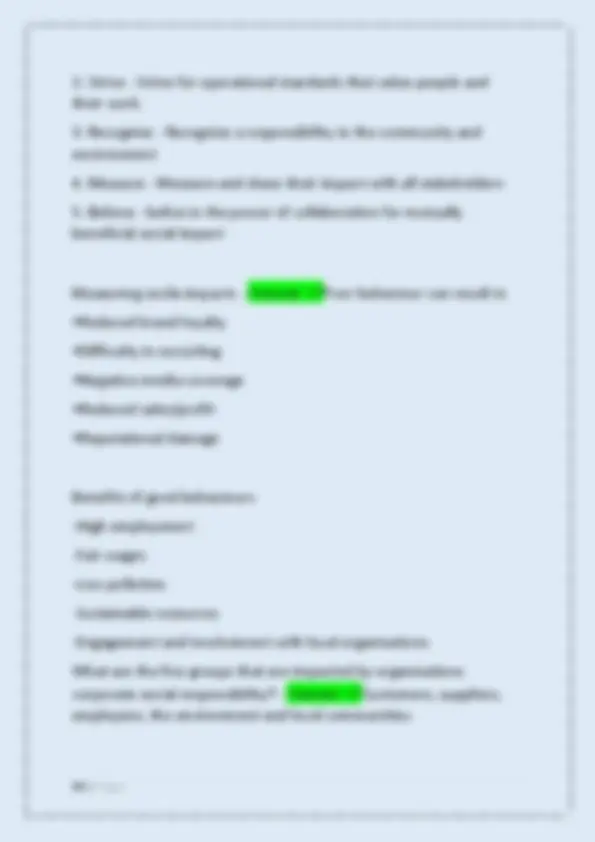
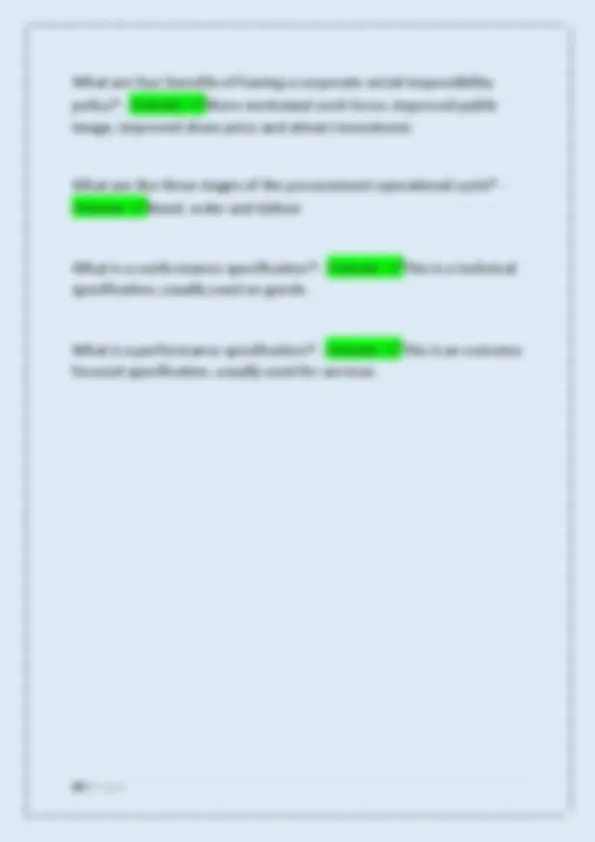


Study with the several resources on Docsity

Earn points by helping other students or get them with a premium plan


Prepare for your exams
Study with the several resources on Docsity

Earn points to download
Earn points by helping other students or get them with a premium plan
Community
Ask the community for help and clear up your study doubts
Discover the best universities in your country according to Docsity users
Free resources
Download our free guides on studying techniques, anxiety management strategies, and thesis advice from Docsity tutors
CIPS Level 4 Module 8 LO4 & CIPS Level 3 Module 1 Exam Study Guides Merger with Answers. What does STEEPLED stand for? (External factors - macro environment) - Answer: ✅Sociological, technological, economic, environmental, political, legal, ethical, demographic How many employees does a micro business have? - Answer: ✅Less than 10 How many employees does a small business have? - Answer: ✅Less than 50
Typology: Exams
1 / 20

This page cannot be seen from the preview
Don't miss anything!













What does STEEPLED stand for? (External factors - macro
environment) - Answer: ✅Sociological, technological, economic, environmental, political, legal, ethical, demographic
How many employees does a micro business have? - Answer: ✅Less than 10
How many employees does a small business have? - Answer: ✅Less than 50
How many employees does a medium business have? - Answer:
✅250 or fewer
What are the support activities of porters value chain model? -
Answer: ✅Firm infrastructure, human resource management, technology development and procurement
What are the primary activities of porters value chain model? -
Answer: ✅Logistics, operations, marketing and sales and after sales service
What is a BRD? - Answer: ✅Business requirements definition - it answers the "what to buy" question and is based on the needs analysis from operations
What does RAQSCI stand for? (a model for identifying business
requirements) - Answer: ✅Regulatory, assurance of supply, quality, service, cost and innovation
What are the two types of field research? - Answer: ✅Quantitative research (statistical information) and qualitative research (peoples opinions)
What are the 4 categories of the Kraljic matrix? - Answer: ✅Critical, strategic, tactical and leverage
What is a situation target proposal (STP)? - Answer: ✅It is a statement that describes the current situation, paints the vision of the target and lists the elements to be used to get to the target
What are SMART objectives? - Answer: ✅Specific, Measurable, Achievable, Realistic, Timely
What is force majeure? - Answer: ✅Force majeure is a powerful and unexpected event, such as hurricane or other disaster, which prevent a contract from being fulfilled
What is a letter of credit? - Answer: ✅A letter from the bank guaranteeing that payment will be made in full on the due date.
What is lean thinking? - Answer: ✅A business methodology that aims to create more value with fewer resources.
What are economies of scale? - Answer: ✅reductions in unit cost resulting from production being increased
What is a SWOT analysis? - Answer: ✅a study undertaken by an organization to identify its internal strengths and weaknesses, as well as its external opportunities and threats.
What are Porter's Five Forces? (Analyse supply market data) -
Answer: ✅
What are the four stages of the product life cycle? - Answer: ✅
What is the macro economy? - Answer: ✅A country's whole economy rather than any specific sector of it. Some factors include interest rates, inflation, exchange rates, level of economic activity, supply and demand.
What is the micro economy? - Answer: ✅Factors that affect individual people and businesses and the economic decisions they make. Factors include customers, employees, competitors, media, shareholders, and suppliers.
What are the five mains areas of legislation that procurement need
to be aware of? - Answer: ✅Corporate laws, business laws, finance laws, employment laws, environmental laws.
What is corporate governance? - Answer: ✅The system by which companies are directed and controlled
What is price skimming? - Answer: ✅A product pricing strategy that sets a high price in the introduction phase. Seller is likely to get a quick return on investment.
What is price penetration? - Answer: ✅A product pricing strategy that sets a low price during the introduction phase. Seller usually gets a slow steady return on investment.
Ethical & responsible sourcing includes the following - Answer: ✅
4 Human Rights.
5 Modern Slavery.
6 Sustainability.
7 Environmental Issues.
10 Values.
Corruption and unethical activities - Answer: ✅A procurement professional needs to ensure that there are no unethical or corrupt activities within their processes or their supply chain.
Bribery - Answer: ✅Usually money or gifts
•The act of accepting something of value in return for having a view or decision influenced
Bribery Act (2010):
-In the UK holds jurisdiction over companies:
•Registered and trading in UK
•Registered in UK and trading overseas
•Trading in UK, but registered overseas
Effects of Bribery - Answer: ✅
-Offering, promising or giving an advantage
-Requesting, agreeing to receive or accepting an advantage
-A discrete offence of bribery of a foreign public official
•Deception - deliberate attempt to present false information, withhold information or influence any stage of the Procurement Cycle, which will be detrimental to other parties
-6 influencing styles (Yukl and Falbe)
•Abuse of power - can be linked to corruption
-5 types of power (French and Raven)
Yukl and Falbe 6 influencing styles - Answer: ✅
French & Raven 5 types of power - Answer: ✅
Embezzlement - Answer: ✅
Fraud - Answer: ✅when a person acts deliberately to secure monies from another party through dishonest methods
Examples of how fraud can present itself:
•Kickbacks
•Corrupt influence
•Collusion
•Bid rigging
•Invoicing fraud
•Substitutions
•False claims
Modern Slavery - Answer: ✅includes human trafficking, bonded labour, forced labour, child labour and domestic slavery
When evaluating suppliers, their policies and practise in relation to treatment of their workers and associated organisations within their supply chain should be assessed
Modern slavery includes - Answer: ✅
Ethical codes of practice - Answer: ✅
Ethical codes of practive - Answer: ✅
4 Respond
5 Evaluate
Nolan's 7 principles of public life - Answer: ✅
4 Objectivity.
Codes of ethics overs - Answer: ✅Diversity - making everyone in the workplace feel comfortable and accepted, covering:
environmental factors - Answer: ✅
The following organisations represent good ethical conduct. -
Answer: ✅
Triple Bottom line - Answer: ✅recognition of the need for organizations to improve the state of people, the planet, and profit simultaneously if they are to achieve sustainable, long-term growth
Sustainable procurement includes - Answer: ✅
Factors affecting the perception of an organisation: - Answer:
✅Ethical behaviour
•An organisation that can demonstrate good ethical conduct will have a much more positive impact on society than one which does not conduct itself in an appropriate way
Environmental behaviour
•Society expects organisations to take responsibility for their waste
•An organisation which creates pollution will have a negative social impact because the effects of this will be felt by the local or global community
Measuring socila impacts - Answer: ✅Poor behaviour can reuslt in
•Reduced brand loyalty
•Difficulty in recruiting
•Negative media coverage
•Reduced sales/profit
•Reputational damage
Benefits of good behaviours
-High employment
-Fair wages
-Low pollution
-Sustainable resources
-Engagement and involvement with local organisations
What are the five groups that are impacted by organisations
corporate social responsibility? - Answer: ✅Customers, suppliers, employees, the environment and local communities.
What are four benefits of having a corporate social responsibility
policy? - Answer: ✅More motivated work force, improved public image, improved share price and attract investment.
What are the three stages of the procurement operational cycle? -
Answer: ✅Need, order and deliver
What is a conformance specification? - Answer: ✅This is a technical specification, usually used on goods.
What is a performance specification? - Answer: ✅This is an outcome focused specification, usually used for services.